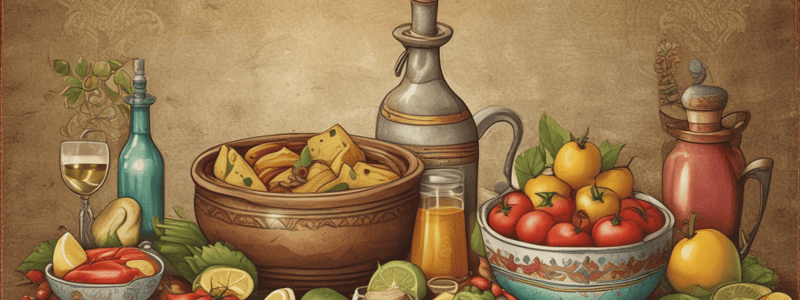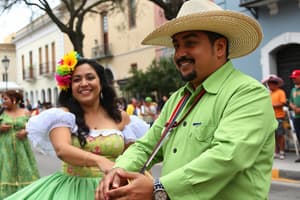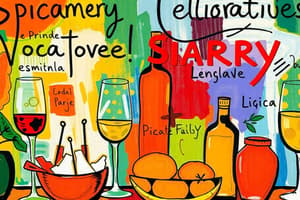Podcast
Questions and Answers
What is distinctive about the ingredients of arepas?
What is distinctive about the ingredients of arepas?
- They are made with wheat flour.
- They are sweetened with sugar.
- They are made with rice flour.
- They contain no sugar. (correct)
Which factor influences the presence of the word 'arep' in Trinidad?
Which factor influences the presence of the word 'arep' in Trinidad?
- Trade relationships between Venezuela and Trinidad.
- Influence of Venezuelan cuisine on Trinidadian food.
- Similar climate and agriculture in both regions.
- Strong Venezuelan influence on the English of Trinidad. (correct)
What purpose do arepas typically serve?
What purpose do arepas typically serve?
- They are a main course in meals.
- They are served as a breakfast item or a side dish. (correct)
- They are used primarily in soups.
- They are a traditional dessert.
What possible fillings can arepas have?
What possible fillings can arepas have?
Identify the incorrect statement about arepas.
Identify the incorrect statement about arepas.
Flashcards are hidden until you start studying
Study Notes
Project
- Students are asked to role-play as doctors and patients, where patients have various illnesses.
- Conchita has a cold (resfriado).
Cultural Note
Arepas
- Arepas are a type of pancake made from white or yellow cornmeal.
- They are typically flat and round in shape.
- Arepas do not contain sugar.
- They can be filled with various ingredients such as ham, cheese, and meat.
- Arepas are commonly eaten as a breakfast item or side dish.
- Arepas are a traditional food from Venezuela.
- A similar food, arep, is also found in Trinidad due to Venezuelan influence on the English language in Trinidad.
Arepas Recipe
- Students are asked to study a recipe for arepas.
- Students are encouraged to try making arepas in their free time.
Studying That Suits You
Use AI to generate personalized quizzes and flashcards to suit your learning preferences.




